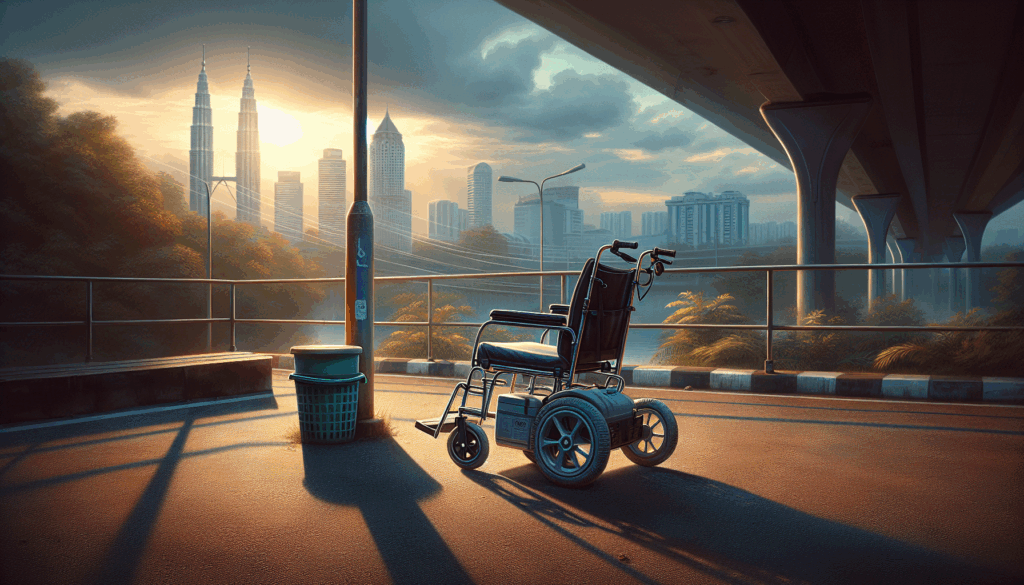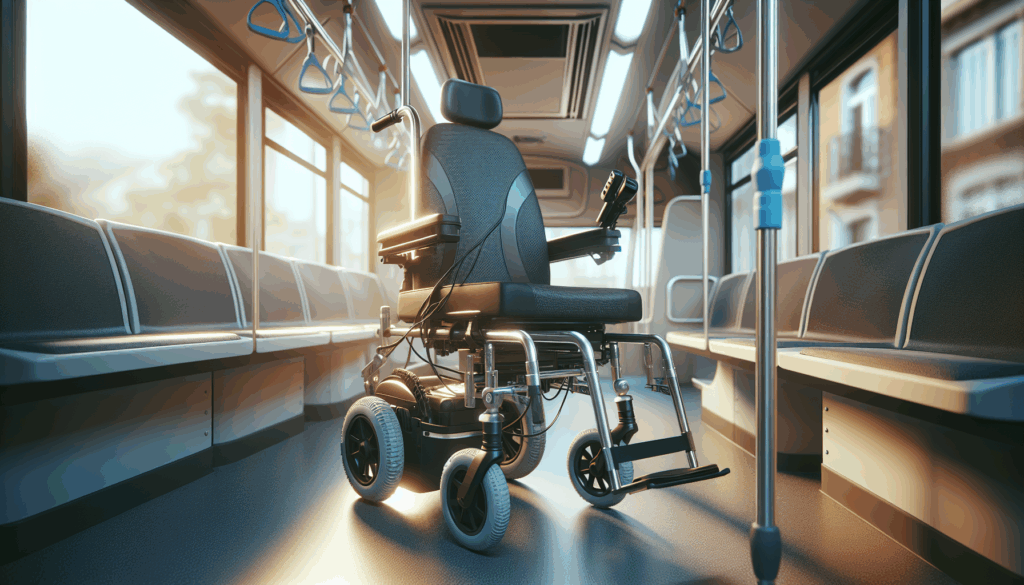
Choosing the right electric wheelchair can significantly enhance mobility and quality of life for individuals with varying needs and preferences. With numerous options available in the market, such as the eDegree EW6, EW3, EW1, and EW7, understanding each specification is essential. From battery life and weight capacity to speed and climbing ability, the specifications directly influence performance and user satisfaction. Taking the time to evaluate these details ensures you select a model that not only meets your unique requirements but also provides comfort, safety, and durability for daily use.
Understanding the Importance of Specifications in Electric Wheelchairs
Other specifications, such as the motor power and climbing ability, also play a fundamental role in determining how well the electric wheelchair can handle various terrains. For example, the Edegree EW7’s 8 km/h maximum speed and 150 kg load capacity indicate its ability to accommodate a wide range of users while navigating various landscapes smoothly. Additionally, features like the auto-reclinable backrest in the EW7 provide customizable comfort, which is essential for those using the wheelchair for extended periods. Ultimately, comprehensively understanding these specifications allows you to make an informed decision, ensuring that the electric wheelchair you choose meets your specific requirements and enhances your mobility experience.
Range Per Charge: Why It Matters for Your Mobility
When selecting an electric wheelchair, understanding the range per charge is crucial for ensuring your mobility and independence.
For instance, different models such as the Edegree EW1 offer a range of 20 km, while others like the Edegree EW6 provide a range of 10-15 km. This variance in range influences how far you can travel on a full charge and is especially important for users who need to navigate larger spaces or want the freedom to venture out without the anxiety of running out of power. Longer ranges, such as the 20 km offered by the Edegree EW1, can significantly enhance user experience and promote a sense of independence, whereas shorter ranges might restrict mobility, especially in suburban or packed urban environments.
Furthermore, features such as battery type and size also play a role in range and charging times. Electric wheelchairs equipped with lithium batteries, such as the Edegree EW3, typically offer efficient performance and shorter charge times compared to lead-acid batteries. For example, the Edegree EW3 has a range of 12-13 km and charges in 6-8 hours, making it a practical choice for users who need a swift recharge during their daily routines. By thoroughly considering these specifications, you can select the ideal electric wheelchair that fits your lifestyle and ensures reliable mobility without frequent interruptions.
Battery Types Explained: Lithium vs. Lead-Acid
When selecting an electric wheelchair, one of the most critical specifications to consider is the type of battery it employs, as this directly influences performance and usability. Lithium batteries, such as those found in the Edegree EW6 and EW3 models, are lighter, providing an impressive range per charge of up to 15km and offering a faster recharge time. These batteries typically last longer and require less maintenance than traditional lead-acid batteries, enabling users to enjoy greater freedom and extended use without the hassle of frequent recharging. Moreover, for those seeking portability and ease of use, the lighter weight of lithium batteries can significantly enhance the overall mobility experience.
On the other hand, lead-acid batteries, like the one used in the Edegree EW1, are generally less expensive but come with their own set of trade-offs. While offering a decent range of up to 20km, they are heftier and usually result in heavier electric wheelchairs, which can be cumbersome for some users. Additionally, lead-acid batteries tend to have a shorter lifespan and longer charging times. By understanding the nuances between lithium and lead-acid batteries, potential electric wheelchair owners can make informed decisions that align with their mobility needs, ensuring they choose a model that supports their lifestyle effectively.
Weight Considerations: How It Affects Maneuverability and Storage
When selecting an electric wheelchair, one of the most critical specifications to consider is its weight, as it greatly impacts both maneuverability and storage convenience. For instance, lighter models such as the Edegree EW3 Carbon Fibre Electric Wheelchair, which weighs in at just 12.5kg, offer exceptional ease of movement and portability, making them perfect for individuals who may need to navigate tight spaces or lift the wheelchair into a vehicle. On the other hand, heavier options like the Edegree EW1, weighing 38kg, can be more cumbersome and may pose challenges for mobility, especially in crowded environments. Thus, the wheelchair’s weight can significantly affect not just the user’s experience but also their independence and overall satisfaction with the product.
Max Load Capacity: Ensuring Comfort and Safety
Max load capacity is a vital specification to consider when selecting an electric wheelchair, as it directly influences the comfort and safety of the user. Each model, such as the Edegree EW6 with a max load of 100kg or the Edegree EW3 that can accommodate up to 160kg, is designed to support different weight limits. If the user exceeds the maximum load capacity, it could lead to performance issues or even accidents, making it essential to ensure that the wheelchair can adequately support the intended user’s weight. A higher max load capacity not only enhances safety but also provides a better, more stable ride, promoting confidence in mobility.
In addition to safety, the max load capacity impacts how the wheelchair performs under various conditions. For instance, the Edegree EW7 can support users up to 150kg while offering features like an auto-reclinable backrest for enhanced comfort. Choosing the right electric wheelchair with appropriate max load capacity ensures that users can fully utilize all features without compromising their safety. Thus, always analyze this specification in relation to both the user’s weight and any additional items they may carry to guarantee a suitable choice that prioritizes their comfort and security.

Speed Capabilities: Finding the Right Balance for Your Needs
When considering an electric wheelchair, speed capabilities play a crucial role in ensuring the right balance between user comfort and practicality. Different models offer various speed ranges that can influence mobility experiences. For instance, the Edegree EW6 and EW3 come with a forward and reverse speed of up to 8 km/h, which is suitable for commuting in urban areas or navigating through crowded spaces.
On the other hand, the Edegree EW1 has a maximum speed of 6 km/h. Understanding the speed capabilities of these electric wheelchairs is essential, especially for users who require efficient transportation over varying distances, with some models, like the EW1, providing a longer range per charge of up to 20 km, compared to others that offer a shorter range, such as 10-15 km. This balance between speed and range is vital for ensuring that users feel confident in their mobility options. It’s important to note that factors like climbing ability and the motor’s power, varying from 190w to 250w in different models, also contribute to the overall performance and experience of an electric wheelchair.
Ultimately, selecting the appropriate speed capabilities, along with other specifications, is key in finding a wheelchair that fits specific mobility needs and enhances the user’s independence and freedom in daily life.
Climbing Ability: Navigating Varying Terrain with Ease
Climbing ability is a crucial feature that enhances the freedom and confidence of electric wheelchair users, especially when navigating slopes, ramps, or uneven outdoor paths. A well-designed electric wheelchair comes equipped with powerful motors and sturdy drive systems that provide the necessary torque to tackle inclines smoothly and safely. Many high-quality models can handle gradients of 6 to 12 degrees (sometimes more for heavy-duty versions), allowing users to move up and down ramps, curbs, or mild hills without feeling stuck or straining the motors.
Key features like larger drive wheels, grippy tires, and a stable center of gravity also help maintain traction and balance on sloped or bumpy terrain, preventing slippage or tipping. Advanced wheelchairs may include suspension systems that absorb shocks from uneven surfaces, ensuring a smoother ride and reducing discomfort for the user.
Battery power plays a role too—a robust battery ensures the motors have enough energy to deliver consistent climbing performance without draining quickly. Altogether, strong climbing ability means users can navigate a wider variety of environments, from city sidewalks and ramps to more challenging outdoor trails, with greater ease, comfort, and independence.
The Role of Gear Modes in Enhancing Your Riding Experience
Choosing an electric wheelchair involves a careful assessment of various specifications, and one critical factor is the gear modes offered. The gear modes in an electric wheelchair can greatly enhance the rider’s experience by providing versatility in speed and control. For instance, the Edegree EW6 and EW3 models both have 5-speed modes, allowing users to adjust their pace comfortably based on their environment and personal preference. Whether navigating tight spaces or cruising on open pathways, these gear modes enable riders to maintain control while increasing safety and comfort during their journeys.
Moreover, the ability to shift between different speeds can be particularly advantageous for users with varying mobility needs. The Edegree EW7 features a top speed of 8 km/h, which suits both leisurely rides and more active outings. Users can easily switch to a more relaxed speed when needed, especially in crowded or busy locations. Ultimately, considering the gear modes in an electric wheelchair not only enhances the overall riding experience but also empowers users with the autonomy to navigate their surroundings with ease, making their daily mobility more enjoyable and efficient.

Make an Informed Choice for Your Mobility Needs
Choosing the right electric wheelchair is more than just a simple purchase; it’s about finding the best fit for your lifestyle and specific needs.
Electric wheelchairs vary significantly in terms of specifications—such as battery type, range per charge, weight, and maximum load capacity—which directly impact usability, comfort, and performance. Consideration of these specifications ensures that you select a wheelchair that not only accommodates your weight and mobility requirements but also provides the kind of efficiency you need whether you’re navigating indoors or outdoors. For example, models like the Edegree EW6 offer a decent range of 10-15 km with a climbing ability of less than 10°, which can be ideal for users who frequently travel short distances while the Edegree EW1, with its lead-acid battery and a longer range of 20 km, serves a different need.
Additionally, other features such as speed options and charging time play a crucial role in your everyday experience. Understanding the differences between models like the Edegree EW3, made of carbon fibre and supporting higher loads, or the luxurious Edegree EW7 with its auto-reclining feature, emphasizes how each wheelchair caters to unique requirements. By taking into account every specification, you empower yourself to make a well-informed decision that will enhance your mobility and improve your quality of life, ensuring that the electric wheelchair you choose aligns perfectly with your needs and lifestyle.
